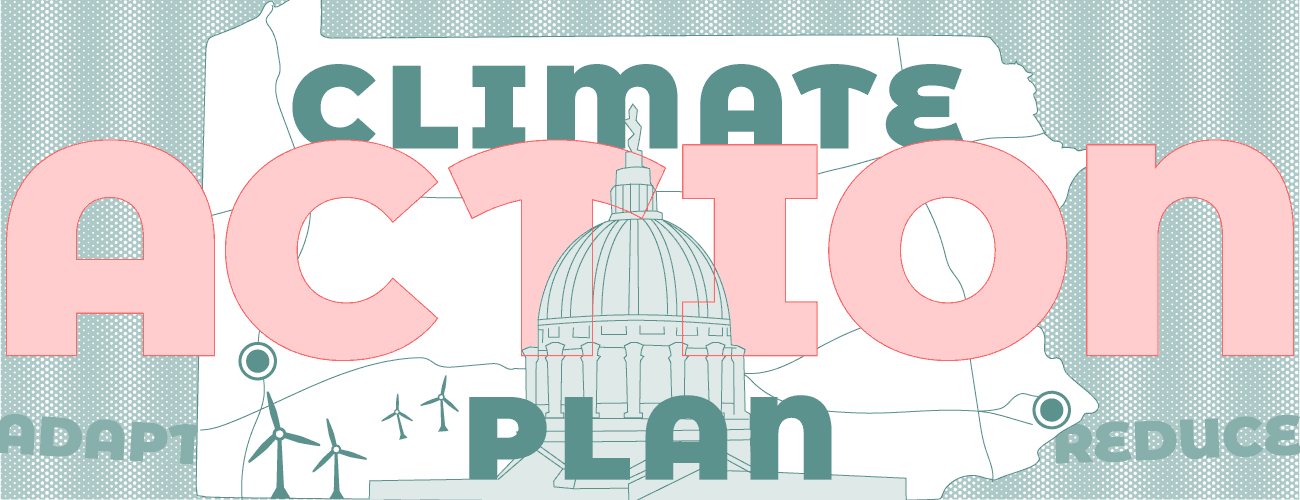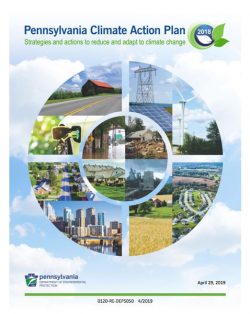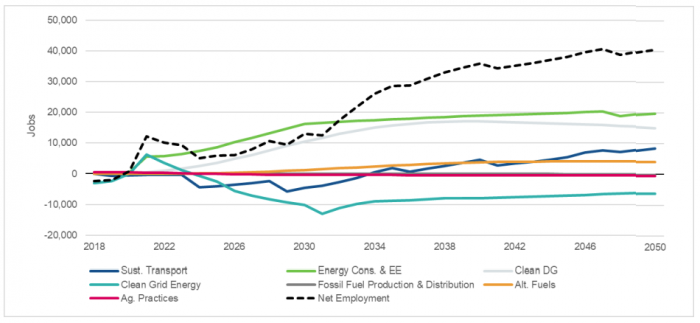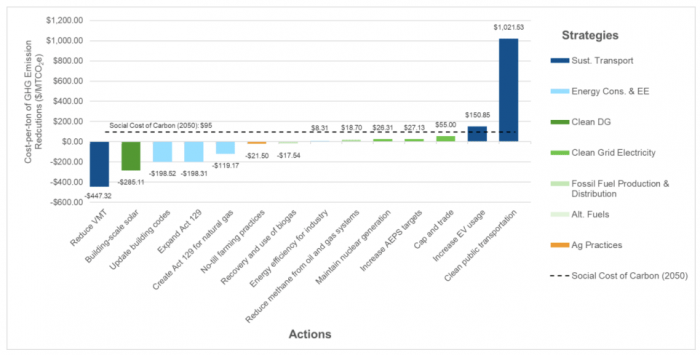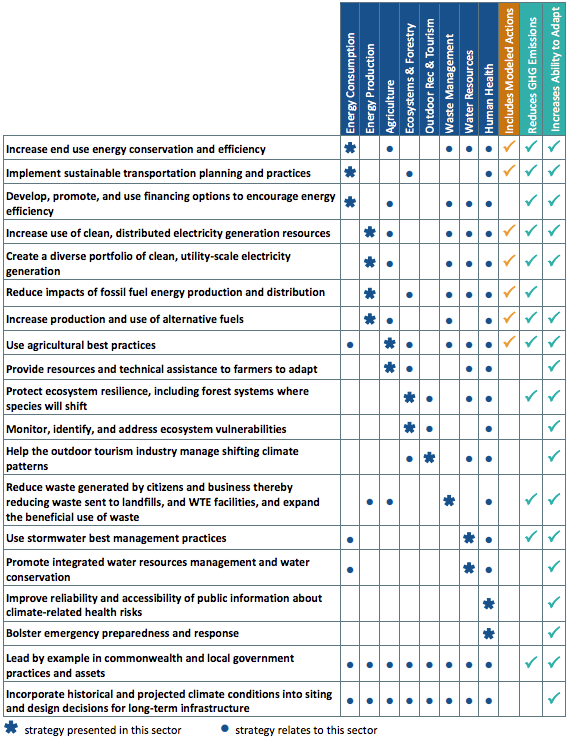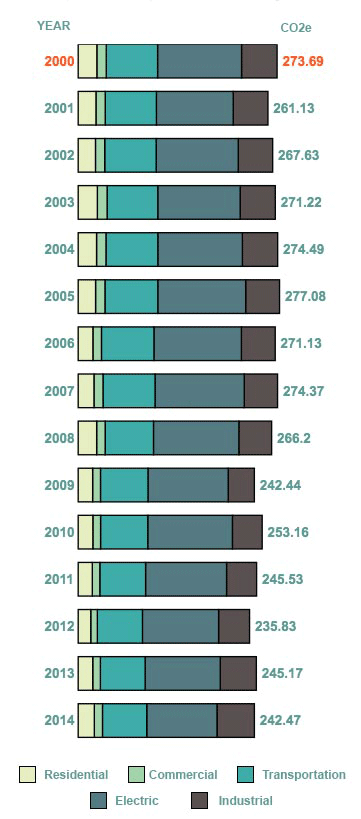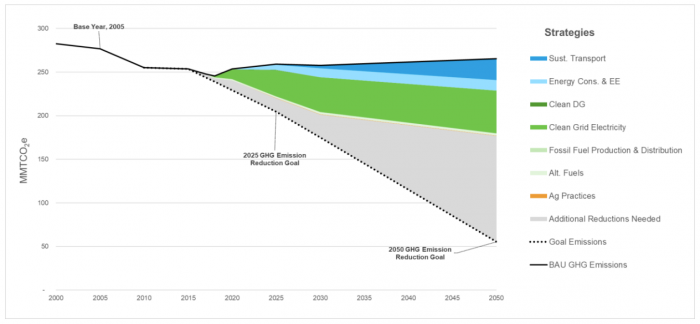Key Takeaways from the new Pennsylvania Climate Action Plan
It’s not news that climate change directly impacts our health and wellbeing, our ecosystem resiliency, and our economic security. What is news is that the Commonwealth of Pennsylvania is taking steps to navigate a path toward a prosperous and sustainable future.
Earlier this year, Governor Tom Wolf signed an executive order establishing statewide targets to reduce greenhouse gas (GHG) emissions 26 percent by 2025 and 80 percent by 2050 from 2005 levels. A few months later in April, the Climate Change Advisory Committee (CCAC) released the Pennsylvania Climate Action Plan 2018 (CAP) with renewed goals and tangible actions to mitigate carbon pollution. Earlier this month, Marc Mondor of evolveEA, an appointed member of the CCAC, presented findings of the CAP to the USGBC’s GreenCon Conference in Harrisburg.
A guiding document updated every three years, the Climate Action Plan has been a means to identify sources of statewide carbon emissions and offer solutions to minimize collective impact.
“The previous plans of 2009, 2012 and 2015 have focused on carbon emissions mitigation. The 2018 Plan also focuses, for the first time, on adaptability. The Plan includes financially responsible solutions related to energy efficiency, renewable energy, distributed energy and transportation”
– Marc Mondor, AIA, CCAC Appointee
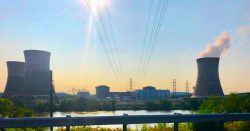
Although nuclear is a hotly debated issue, it is the cleanest fuel source (zero carbon emissions) and one of the most stable baseline energy producers on the grid. The Three Mile Island facility, pictured here, is one of three statewide nuclear power plants scheduled to be phased out over the next two years. (Photo by Marc Mondor)
In addition to 19 notable strategies, the 2018 Plan outlines measurable key performance indicators (KPI) in the following eight sectors: energy consumption, energy production, agriculture, ecosystems & forestry, outdoor recreation & tourism, waste management, water resources and human health.
As a redux of the 231 page document, we’ve sifted through the Plan to bring you our top five takeaways:
5. Energy efficiency creates jobs.
It is a common misconception that reducing energy consumption and production leads to a decreased number of jobs. Developing new technologies and retrofitting existing systems for energy efficiency creates market opportunities and bolsters the economy. The above graph (Figure 4 on page 23 of the Plan) demonstrates a projected net increase in jobs across the eight sectors. What’s more, according to E2’s 2018 Clean Jobs Pennsylvania report, there are over 86,000 clean jobs in the Commonwealth, which puts Pennsylvania 11th in the country for green jobs.
4. Taking action saves money.
Reacting to climate change is expensive. Page 26 of the report reveals that severe weather has cost the USA over $1.1 trillion since 1980. A more cost-effective way to address the issue is to proactively implement systems and infrastructure that reduce climate impact before it becomes a problem. Figure 3 on page 22 evaluates actions based on the social cost of carbon; data below the dotted line shows investments that will give immediate returns.
3. Solutions exist!
If you thought there was nothing that could be done to solve climate problems, think again. The CCAC highlights 19 strategies and recommended actions for each of the eight sectors. For the first time in the decade since the Climate Action Plan was initially released in 2009, the 2018 version includes specific target reductions and actionable strategies that have been modeled financially, both quantitatively and qualitatively. A table with the 19 strategies is found on page 40 of the report.
Additional recommendations include:
- Expansion of the 2008 ACT 129 that incentivizes energy efficiency in the electric grid. This law is 10 years old and needs to be updated (see current Senate Bill 232)
- Establish an ACT 129 equivalent to incentivize efficiency for natural gas
- Implement CPACE as a mechanism for financing energy efficiency measures
2. Although we’ve reduced emissions…
Over the past 15 years, Pennsylvania has cut over 34 million metric tons of carbon emissions.
This reduction is primarily attributed to the emergence of natural gas which, as a cleaner-burning fuel and the least expensive option of energy production, has displaced coal. However, natural gas is now also displacing nuclear.
Of the nine nuclear reactors in Pennsylvania, three are to be decommissioned over the next two years. While not without problems, nuclear power is completely carbon free, yet the Plan assumes that production will remain constant.
1. We are not currently on target to hit these goals.
Even if the Commonwealth implements all the recommended strategies in the Plan, our emissions will still fall short of the 2025 and 2050 targets. Meeting these goals will require state-level leadership, concerted efforts, integrated thinking, and innovation.


